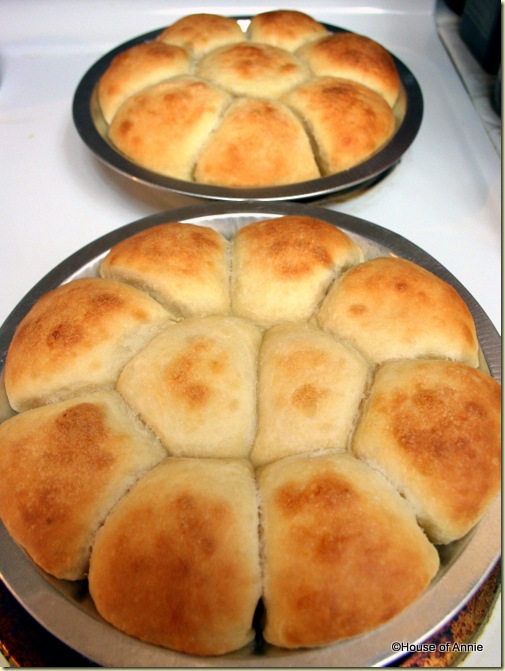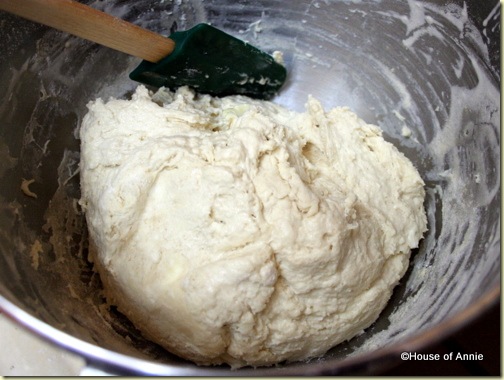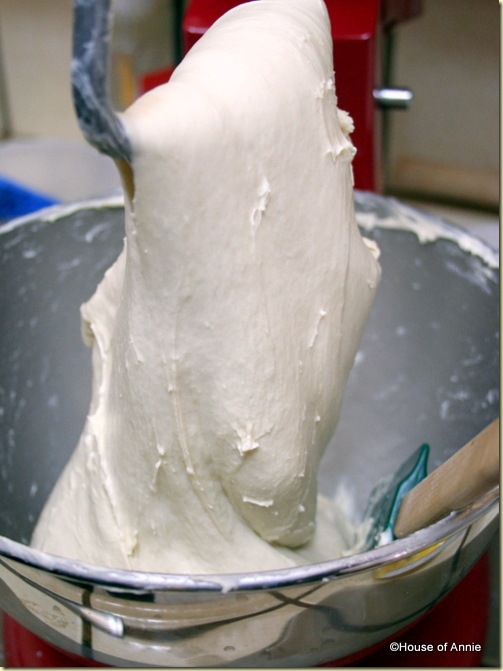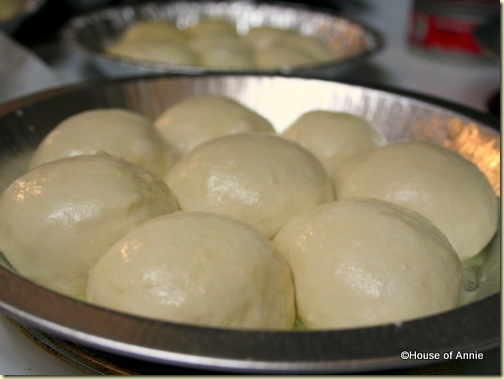Updated 20 Nov 2010
Originally posted 20 April 2009
There’s nothing better than fresh, homemade bread. Here are two easy recipes for how to make the best, pillowy-soft dinner rolls from scratch. Perfect for your Thanksgiving and holiday meals.
Buttery Dinner Rolls
Have you ever wanted to look for a recipe for something and then ended up with so many choices that you are paralyzed on which one to try? Or even more crazily, you try to incorporate a bunch of them into one recipe?
That’s how I was recently while looking for the ultimate dinner rolls. I’ve tried baking buttery dinner rolls using Rose Levy Beranbaum’s recipe from “The Bread Bible” before. They’ve turned out really well but I want something that will knock my socks off and make me want to keep eating them (even though with each buttery bite, more fat makes its way to my hips). That’s what I’m looking for baby!
Which Roll Rocks?
So I looked up a bunch of recipes for buttery dinner rolls and after looking, comparing and reading reviews, I decided to try the recipe I found on Food Network. I actually baked up a batch of these Food Network dinner rolls along with a double batch of Beranbaum’s recipe just to be able to do a comparison of taste. And no, I’m not on a carbo-load. I just had a dinner event to go to and my contribution was bread.
So after baking them both, I will tell you that they are both good. There are some differences between the two buttery dinner rolls. Both are reasonably easy to make (especially if you have an electric mixer to do the kneading for you) but one is more time-consuming. Beranbaum’s recipe requires an overnight rest in the fridge for the sponge (for maximum flavor development) followed by three more rises. The Food Network recipe is quicker – it only calls for two rises and can be done in a day.
It’s Not Just Flour, Yeast and Water
The other difference in the recipes is in the ingredients. Beranbaum’s recipe does not call for eggs whereas the other one does. Beranbaum’s also asks for dried milk powder (which I substituted with Coffeemate—because that’s what I had handy). The Food Network recipe calls for milk. That recipe also called for more sugar. Also Beranbaum’s recipe calls for the rolls to be dipped in melted butter in the last rise—that makes them super delicious but also means getting your hands oily while buttering them up. The other one just asks for them to be brushed on top with butter after the rise.
Overall, I think if you like your rolls to be sweeter and more enriched, the Food Network recipe is better. But Beranbaum’s recipe is also delicious and I find the texture more pleasing but less like sweet dinner rolls and more like plain dinner rolls with a buttery fragrance (from the lack of egg). At the end of the day, I was conflicted. I enjoyed them both but the time and effort in making Beranbaum’s recipe made me think that the Food Network one is a more useful, daily recipe.
I’m going to post both recipes here so that you can decide for yourselves which you’d like to try.
Butter-dipped Dinner Rolls
from The Bread Bible by Rose Levy Beranbaum
makes 12 dinner rolls
Ingredients:
Dough starter:
6 oz (170 g or 1 cup plus 3 Tablespoons) unbleached all-purpose flour
¾ cup plus 2 Tablespoons water, room temperature (70° to 90°F)
1 Tablespoon plus ½ teaspoon honey
¼ teaspoon instant yeast
Flour mixture and dough:
5.5 oz (156 g, or 1 cup plus 1 ½ tablespoons) unbleached all-purpose flour
(use only Gold Medal, King Arthur or Pillsbury)
2 Tablespoons dry milk, preferable non-fat
½ teaspoon instant yeast
4 ½ Tablespoons unsalted butter, softened
1 1/8 teaspoons salt
4 Tablespoons unsalted butter, melted and cooled
Method:
For dough starter:
1. In a mixer bowl or other large bowl, combine the flour, water, honey, and instant yeast. Whisk until very smooth, to incorporate air, about 2 minutes. The sponge will be the consistency of a thick batter. Scrape down the sides of the bowl and cover with plastic wrap.
Dinner Rolls Dough Starter
For dough:
2. In a medium bowl, whisk together the flour (reserve ¼ cup if mixing by hand), dry milk, and instant yeast. Sprinkle this on top of the sponge and cover tightly with plastic wrap. Allow to ferment for 1 to 4 hours at room temperature. (Or for maximum flavor development, ferment for 1 hour at room temp, and then refrigerate for 8-24 hours). During this time the sponge will bubble through the flour blanket in places: this is fine.
3. Mix the dough. Using a mixer, add the butter to the bowl and mix with the dough hook on low speed (#2 if using a KitchenAid) for 1 minute or until the flour is moistened enough to form a rough dough. Scrape down any bits of dough. Cover the top of the bowl with plastic wrap and allow the dough to rest for 20 minutes.
Dinner Roll Dough Before the First Rise
4. Sprinkle on the salt and knead the dough on medium speed (#4 on KitchenAid) for 7 to 10 minutes. It will not come away from the bowl until toward the last minute or so of kneading; it will be smooth and shiny and stick to your fingers. Scrape down any dough clinging to the sides of the bowl. If the dough is not stiff, knead it in a little flour. If it is not at all sticky, spray it with a little water and knead it in. (It will weigh about 22 ounces/629 grams.)
Dinner Roll Dough Ready for Second Rise
5. Scrape the dough into a 2-quart dough-rising container or bowl, lightly oiled with cooking spray or oil. Push down the dough and lightly spray or oil the surface. Cover the container with plastic wrap. Allow the dough to rise (ideally at 75° to 80°F) until doubled, 1 ½ to 2 hours.
6. Transfer the dough onto a floured counter and press it gently into a rectangle. It will be full of air and resilient. Try to maintain as many of the air bubbles as possible. Pull out and give it 2 business letter turns (ie. left to center, right to center, flip and repeat) and set it back in the container and oil the surface, cover, and allow the dough to rise for 1 to 2 hours or until it doubles again.
7. Shape the dinner rolls. Cut the dough into 12 even pieces. Work with one piece at a time, keeping the remaining dough covered.
8. If the dough is sticky, flour your hand—but not the counter, so that the dough has a little resistance to help shape it. Roll each piece of dough, cupping your hand over it, to make a smooth ball. Seal the small indentation that forms in the bottom by pinching it tightly. This will help to make a tight skin on the outside of the roll, which will give it an even shape during baking.
8. Pour the butter into a small bowl. Dip each dough ball into the melted butter and coat all sides, then place it pinched side down in the pan, making 3 rows of 4 rolls each (if using a square pan or just arrange in a round pan as evenly as possible).
9. Cover the pans loosely with oiled plastic wrap, and allow the rolls to rise for about 1 ½ hours, until double; the center of the tops will almost reach the top of the pan. When the dough is pressed with a fingertip, the indentation will remain.
Buttery Dinner Rolls After the Third Rise
10. Preheat oven to 400°F 1 hour before baking. Have an oven shelf at the lowest level and place an oven stone or baking sheet on it, and a sheet pan or cast iron skillet on the floor of the oven, before preheating.
11. Quickly but gently set the pans on the hot baking stone or hot baking sheet, and toss ½ cup of ice cubes into the pan beneath. Immediately shut the door, and bake for 20 minutes or until medium golden brown (an instant-read-thermometer inserted into the center will read about 212°F). If planning to reheat the rolls to serve later, bake them only for 15 minutes or until pale golden (about 180°F).
12. Remove the rolls from the oven. Unmold and cool them top-side up on wire racks until just warm, about 20 minutes, then pull apart.
Buttery Dinner Rolls
Homemade Dinner Rolls Recipe
by Tanya Holland / Food Network
makes 24-30 dinner rolls
Ingredients:
1 (1/4-ounce) package dry active yeast
1 cup warm water, about 110 degrees F
1/2 cup sugar
1 egg, beaten
2 teaspoons salt
1 cup milk, scalded but cooled to warm
4 ounces melted butter, plus 2 ounces
5 cups flour, plus more, as needed
Method:
1. In a standing mixing bowl with dough hook, dissolve yeast in warm water. Let sit until lightly foamy, then stir in sugar and add egg, salt, warm milk, and 4 ounces of butter. Slowly add 5 cups flour, adding more as needed to make an elastic dough. Mix well, then roll out to floured surface and knead dough for about 5 minutes.
2. Place dough in oiled bowl, cover with plastic wrap, and set in a warm place to rise until double in bulk, about 1 hour.
3. Lightly oil your baking pan (I used round pie tins, the original recipe calls for muffin pans, your call).
4. Punch down dough and form dough into 1-inch balls. Arrange balls in baking pan and allow to rise an additional 1/2 hour.
5. Preheat oven to 425 F.
6. Brush with remaining melted butter. Bake in preheated oven for 10 to 15 minutes, until golden brown.
Enjoy both recipes and let me know which is your favorite! There is nothing like having fresh dinner rolls warm from the oven! Yum!
Cheers, Annie





>I’ve made cakes and bars and cookies and quick/sweet breads. But never something like this! Thank you for sharing the recipe!
>Great recipe review, I really enjoyed it.
Also, the buns look great, I wish I could taste them 😉
It’s a real dilemma, I prefer less sweet too, the the hardest to make would be my first choice…
>They do indeed look picture perfect. Thanks from Santa Barbara. best, s
>You have inspired me… to go BUY a package of King’s Hawaiian dinner rolls. Yes, I’m a lazy butt. =)
Back in the day when her baking was still noteworthy, MIL would enclose a pat of butter in each roll before rising/baking. They were tasty, but the bread itself bordered on door stop hardness.
>mmmm buttery dinner rolls. I think I would prefer the least sweet of the two rolls. I don’t really like things sweet. Kudos on the rolls, they look great!
>hate to sound corny, but the dinner rolls in the picture here looks just like the ones “my grandma used to make”, but i have never been able to reproduce. this wonderful posting gives me a chance to try, try again… thanks!!!
>I am so inviting you to my next dinner party — if you’ll bring the dinner rolls! (I prefer less sweet.)
>Bread is a little overwhelming to me as a whole – so many choices, big time commitment for many of them (the whole rising thing) and yet the outcome is ssoooo worth it! These look delicious – you’re welcome to bring the bread to any dinner party I’m hosting 🙂
>These look really cute in their circle ready to pull apart. It’s great that you’ve compared two versions. If they’re very similar I think the easier one would win for me.
>Fantastic, I can taste them now! I recently made 60 dozen very similiar rolls for an event. I love your blog and will be back.
>I bet the dinner guests were quite happy with whichever one they got — they look spectacular!
>The rolls look wonderful! I was puzzled about the amount of flour. The first one seems to have a much smaller amount that the second recipe. Perhaps I’m reading it incorrectly. How much total flour in Rose’s recipe? I’d like to make both recipes and see which I like better. A good excuse for a pig-out on rolls 🙂
>@all – thanks for your comments!
@Pearl – now’s a good time to try it!
@Christelle – thanks!
@J – too funny.
@judyfoodie – thanks!
@HerbyN – wow, high praise. Please try out the recipe and let us know how they turn out for you.
@Lydia – sure thing 😉
@Hornsfan – waiting for the bread to rise is the easiest part 😉
@Sarah – 60 DOZEN? whew! you are an expert!
@Elle – the first recipe only makes a dozen while the 2nd makes 30. That’s why the disparity in amount of flour.
>Hi! I'd love to try the recipe of dinner rolls by Food Network.
How much is 1 packet active dry yeast in terms of teaspoons or tablespoons? My area sells this in little unmarked plastic bags.
>I usually brush milk on top of my dinner rolls it does the trick to get it nice and golden with out the buttery fat. Instead of the butter i substituted for olive oil for a fruitier flavor and its healthier also.. :-).. then again i did not use dry milk powder I used evap milk.. To me it seems to help it melt in the mouth better. still that's my opinion..
The rolls look perfect…!
Wow. That looks so divine. Did you made them using hand or by machine? Bread is my favourite food in the morning. Maybe it mine should be Buttery Breakfast Rolls instead? Haha 🙂
These look so soft!
Both rolls look soft and inviting but I’ll have to go with the quicker one.
wow, this look so good and nice!
Annie, these rolls look absolutely delicious, light and fluffy.
Buttery, poofy, warm dinner rolls are the stuff of dreams. My niece, who loves her bread, can eat a whole dozen of ’em if I let her.
Tried the Food Network recipe and it turned out very well. My kids cant stop grabbing the little buns. Made my version of cinnamon rolls with the remaining dough and it’s still a winner.
Thanks huge for sharing the recipe.
I just tried the Food Network one, mainly because I needed them quick, if you can call making homemade rolls quick. LOL My problem was, I only had one stick of butter left. It never occurred to me to save a little butter and substitute a little oil in the dough, so I brushed a little melted bacon grease on the rolls before baking, then we ate homemade apple butter on the rolls since we didn’t have butter. Yum! My range oven went kaflooey recently, then hubby started flipping circuit breakers thinking that was the problem and fried my microwave too! Rather than replace the range and the microwave I opted for a microwave/convection combination oven. I’m still learning it. I followed their recommendation of baking the rolls at 350*. Next time I’ll either use the recipe’s 425* degrees or drop it to 400* but no lower. Thanks for the recipe.
Marsha –
thanks for the comment! Enjoy your combi oven 🙂
Beautiful! They look amazingly soft! Never made them before but you definitely gave me an idea for my next dinner party. Thanks a lot! Love your blog =)